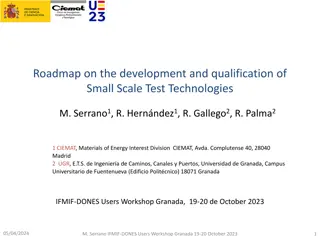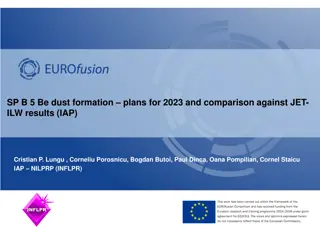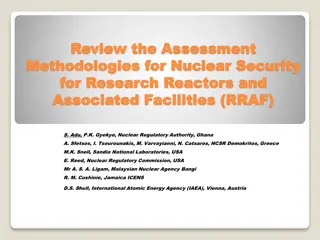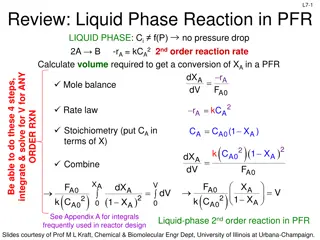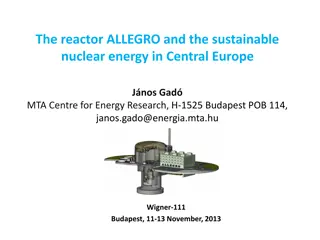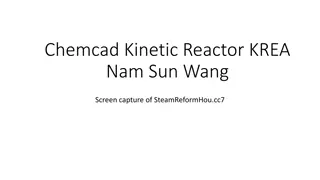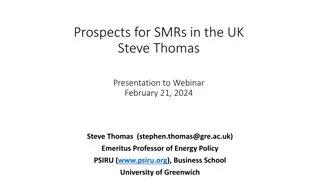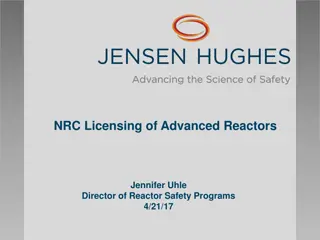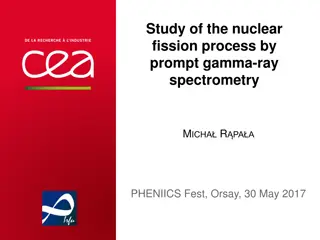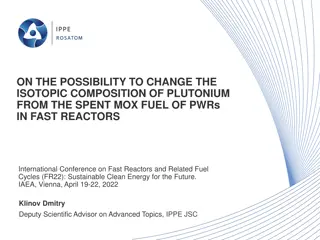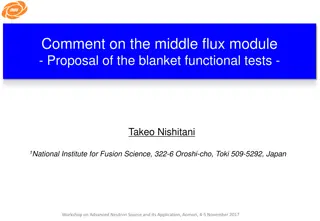Understanding Reactors in ChemCAD: Models and Examples
ChemCAD offers various reactor models such as stoichiometric and equilibrium reactors for simulating chemical processes. Engineers can choose the appropriate model based on the reaction type and accuracy needed. Explore different reactor types through examples and process flow diagrams to enhance your understanding of reactor design in ChemCAD.
Uploaded on Sep 12, 2024 | 0 Views
Download Presentation

Please find below an Image/Link to download the presentation.
The content on the website is provided AS IS for your information and personal use only. It may not be sold, licensed, or shared on other websites without obtaining consent from the author. Download presentation by click this link. If you encounter any issues during the download, it is possible that the publisher has removed the file from their server.
E N D
Presentation Transcript
Reactors in ChemCAD Joshua Condon, Richard Graver, Joseph Saah, Shekhar Shah
Different Types of Reactor Models Several options are given in ChemCAD for reactor unit ops Each type plays a specific role Engineer s prerogative/responsibility to choose the correct one for the job Types Stoichiometric, Equilibrium, Kinetic, and Gibbs
Stoichiometric Reactor The simplest reactor model in ChemCAD Used only for single reactions Great for a preliminary model of a process Normally want a better reactor model for later process flow diagrams Basics Specify stoichiometry of reaction, thermal mode, key component, and fraction conversion
Stoichiometric Example Suppose we are adiabatically forming water from oxygen in the following reaction: H2+ O2-> H2O Basis: 1 mole Oxygen and complete reaction
Stoichiometric Reactor Great for initial observations and calculations However, may not give physical results Better to use one of the other reactors when accuracy is needed
Equilibrium Reactor Simulates multiple reactions at once Requires equilibrium data or conversion for each reaction Uses ChemCAD component thermodynamic data More complex version of the stoichiometric reactor Assumes reaction is run to close to equilibrium Approximates a reactor with a high residence time Estimates final conversion based on component equilibrium data and reaction stoichiometry
Equilibrium Reactor Example Steam reformer in methane to syngas process Reaction 1: CH4 + H2O 3 H2 + CO Reaction 2: CO + H2O CO2 + H2 Specify 2 reactions Select thermal mode Adiabatic, isothermal, or specify heat duty
Equilibrium Reactor Example Select reactor type (standard, methanation, shift) Methanation reactor provides all necessary stoichiometry and equilibrium data specifically for example reactions 1 and 2 Select conversion mode Reaction conversion ignores equilibrium data and uses a specified percent conversion Approach delta T calculates equilibrium conversion at a certain temperature above or below reactor T Approach fraction estimates conversion of reaction that does not completely reach equilibrium
Equilibrium Reactor Example Select base component (for example, CH4) Select conversion Enter stoichiometric coefficients for reaction 1 Repeat for reaction 2 Not used in methanation or shift presets
Kinetic Reactor Module Basics Can be used to calculate the volume of a PFR or CSTR, given the fractional conversion of one component, or vise- versa. Up to 300 simultaneous reactions can be input Liquid, Vapor, or mixtures are allowed, but the reaction is only allowed to take place in one phase
Included Assumptions CSTR Assumptions Perfect mixing Uniform temperature, pressure, and composition throughout Rate of reaction is constant If thermal mode adiabatic, or a heat duty is specified, temperature is calculated If temperature is specified, heat duty is calculated PFR Assumptions No axial mixing or axial heat transfer occurs Transit times for all fluid elements from inlet to outlet are of equal duration Can be operated in the five thermal modes of isothermal, adiabatic, specified temperature profile, and specified utility conditions
Kinetic Reactor Design Equations For a CSTR, the design equation is For a PFR, the design equation is ChemCAD solves the CSTR equation directly, and solves the PFR equation using numerical integration if the volume is specified
Rate Expression CHEMCAD s kinetic reactor is programmed with a rate expression of the form:
Gibbs Reactor After setting up the Gibbs reactor, input the following operating conditions and reactor specifications: Temperature Pressure Inlet flow rates Thermal mode Reaction phase
Gibbs Reactor Outputs ChemCAD outputs: Temperature Pressure Composition Heat of Reaction (inerts that take up heat can be taken into account)
Advantages vs. Disadvantages Advantages Allows all potential reaction to happen by employing an element matrix (ChemCAD generated) and then minimizes the Gibbs free energy of the products to obtain output compositions and conditions Disadvantages Relies heavily on the specified thermal mode and thermodynamic model, but it is not clear how close the actual reaction comes to equilibrium




